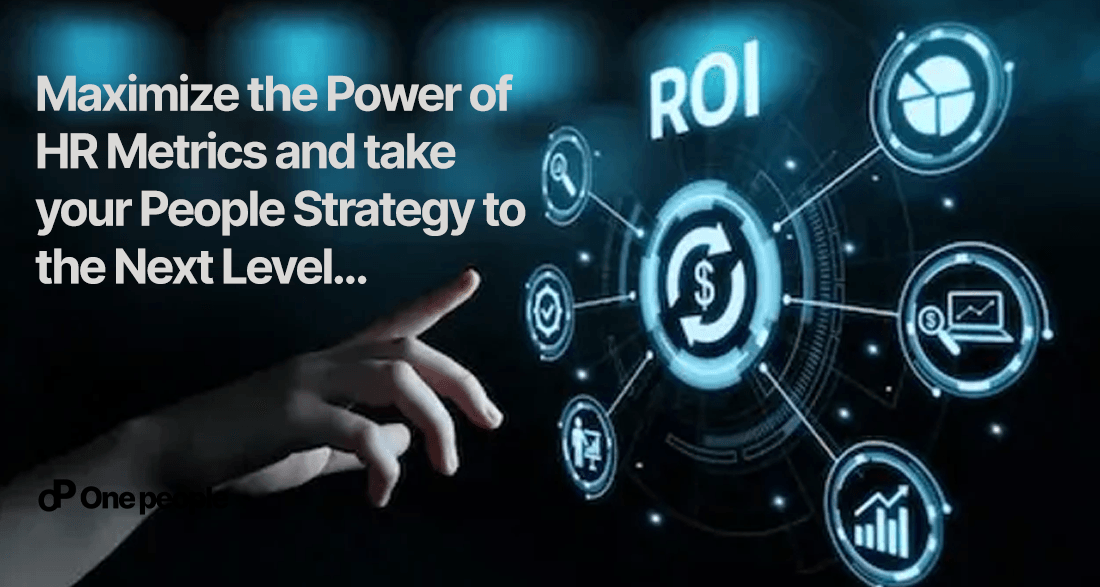HR Metrics are measurements that determine the effectiveness of HR initiatives. HR related metrics that impact the bottom line are employee productivity, employee satisfaction, absenteeism, and training and development costs. By tracking these metrics and using data-driven insights to inform decision-making, HR leaders can play a critical role in driving business success.
There are several methods that can be used to obtain HR metrics, such as manual data collection and analysis, or spreadsheets. These methods can be effective in collecting and analyzing HR data, but they may be time-consuming and prone to errors, especially when managing large amounts of data.
A robust HRIS (Human Resource Information System) can help organizations overcome these challenges by providing a centralized location for data storage and management, as well as automated data collection and analysis. The data collected from these metrics can then be analyzed to identify patterns and trends, and make informed decisions related to HR management and strategy, such as employee turnover rate, absenteeism rate, training and development ROI, and more. This can lead to increased productivity and reduced costs associated with turnover and absenteeism.
To unlock the power of HR metrics, organizations must first identify the metrics that are most relevant to their business goals and HR strategy. For example, if an organization is focused on reducing employee turnover, HR metrics such as turnover rate, new hire retention rate, and exit interview feedback can be useful in identifying the root causes of turnover and developing retention strategies.
On the other hand, If an organization is focused on improving employee engagement, HR metrics such as engagement survey results, attendance rates, and performance feedback can be used to develop targeted interventions, such as training and development programs or employee recognition initiatives.
Key HR Metrics to Drive Organizational Change
HR should look for ways to collaborate and partner with other departments on a strategic level. The use of HR Metrics will help gain valuable insights into the organization’s workforce, make data-driven decisions, and develop targeted interventions that can help promote productivity and employee engagement. Here are some examples of HR metrics that organizations commonly use to measure the performance and effectiveness of their HR management practices:
Employee Turnover Rate – This metric measures the percentage of employees who leave the organization within a given time period. A high turnover rate can indicate issues with employee engagement, retention, or workplace culture, which can ultimately impact the organization’s financial performance.
Time-to-fill – This metric measures the length of time it takes to fill open positions in the organization. A long time-to-fill can lead to lost productivity and revenue, which can negatively impact financial performance.
Total training investment – This metric measures the amount of money the organization invests in training and development for employees. A higher investment in employee training and development can lead to higher employee retention, engagement, and productivity, ultimately positively impacting financial performance.
Cost per hire – This metric measures the average cost to hire a new employee. This metric can be used to identify areas where recruitment and selection processes can be improved to reduce costs and increase efficiency.
Employee Productivity – This metric measures the output of an individual employee, team, or the organization. Higher employee productivity can lead to increased revenue and profits for the organization.
Human Capital ROI Ratio – This metric measures the return on investment (ROI) of human capital in terms of financial outcomes. It measures the percentage of scheduled work time that employees are absent from work. High levels of absenteeism can indicate issues with employee engagement, satisfaction, and/or workplace culture, which can ultimately impact financial performance.
Total Cost of Workforce: This metric measures the total cost of compensation and benefits for all employees in the organization. This includes salaries, bonuses, benefits, and other related costs. Understanding the total cost of the workforce can help finance teams make informed decisions about investments in human capital.
Billable Hours per Employee: This metric measures the amount of time employees spend on billable work. This is particularly relevant for service-based organizations where employees are expected to generate revenue through their work. Increasing billable hours per employee can help drive financial performance.
Training Performance Differential: This metric measures the difference in performance between employees who have completed training and those who have not. It helps to demonstrate the effectiveness of training programs and how they impact financial performance.
New Hire Turnover Rate: This metric measures the percentage of new employees who leave the organization within a given time period. A high turnover rate among new hires can indicate issues with the recruitment and selection process, onboarding, or workplace culture, which can impact financial performance.
In conclusion, unlocking the power of HR metrics requires identifying relevant metrics, collecting and analyzing HR data, and developing targeted interventions to improve HR management practices. An HRIS system can provide a streamlined process for data collection and analysis, making it easier for organizations to take their people strategy to the next level and achieve their business goals.
One People is s cloud-based integrated Global HR and Payroll Solutions provider that will help you streamline your Human Resources and Global Payroll processes, using a single platform. Our system provides significant benefits to HR leaders when it comes to tracking and analyzing HR metrics. With easy access to accurate, real-time data, HR professionals can quickly identify trends and patterns, track progress against benchmarks, and make data-driven decisions. This system also provides a central location for storing all HR-related data, making it easier to generate reports and ensure compliance with regulatory requirements. By leveraging the power of HR analytics with the help of One People’s HRIS system, organizations can improve their overall talent management practices, increase productivity, and ultimately drive business success.
Give us a call at +97145139090 | | https://wolkepeople.com | | [email protected]




